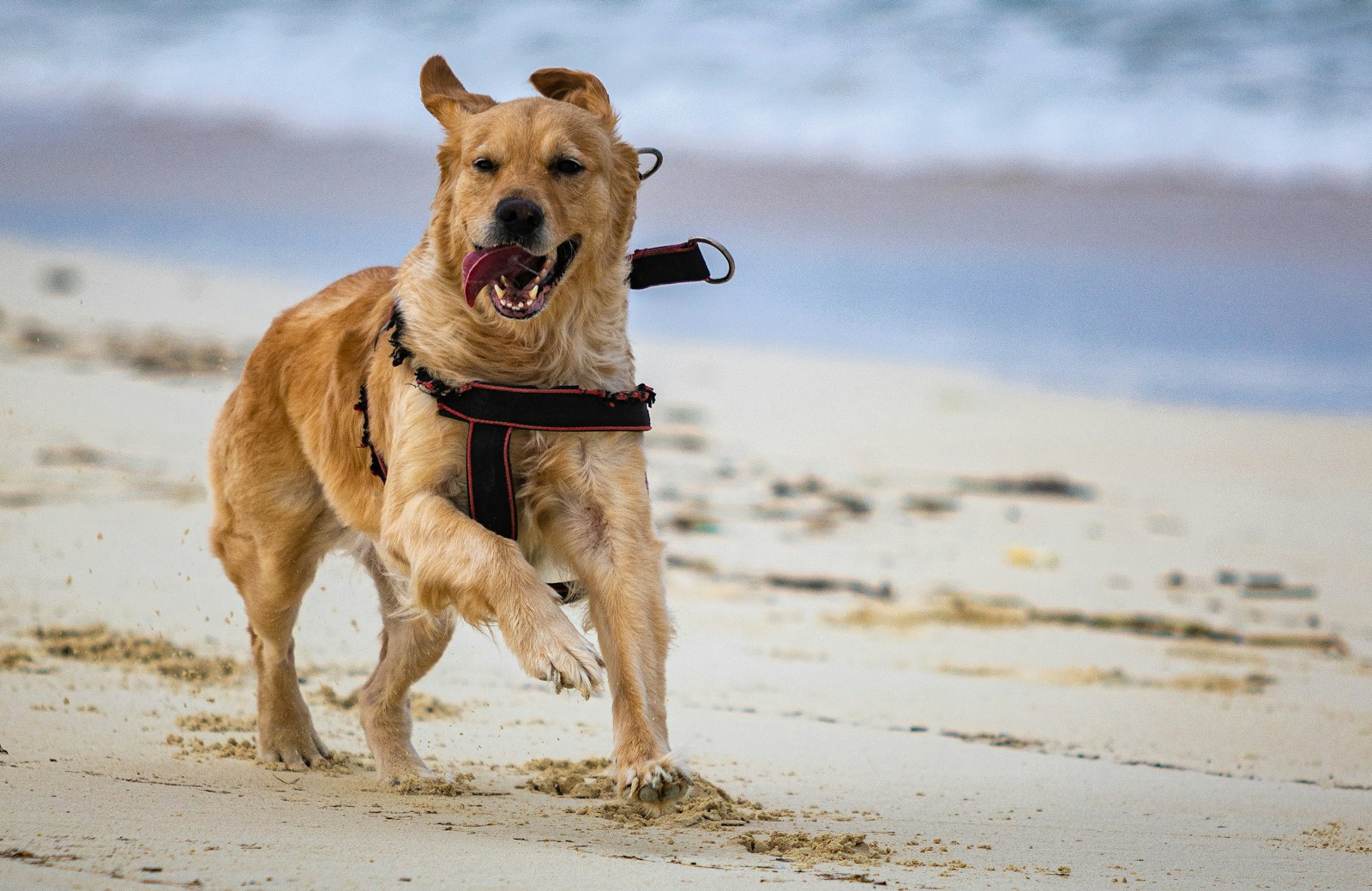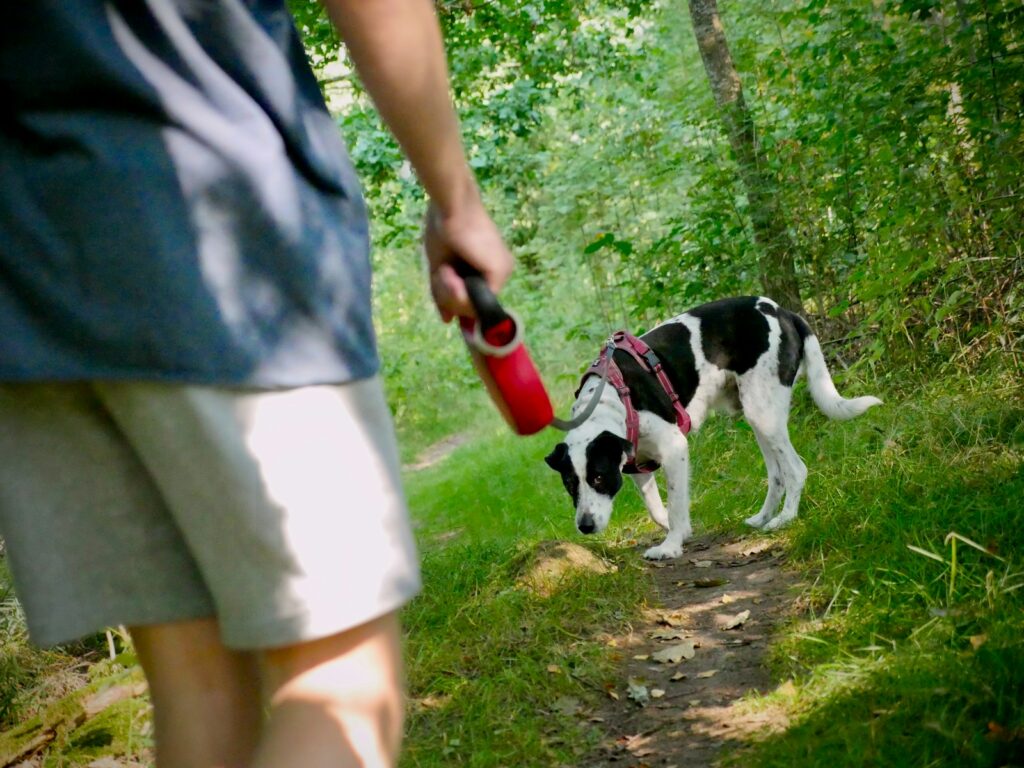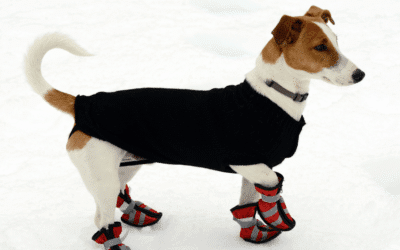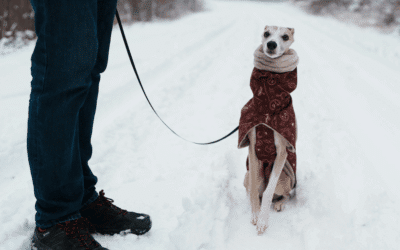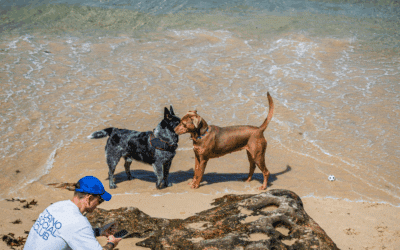Disclaimer: Kate’s K9 Pet Care proudly provides dog walking, cat sitting, small animal pet care, pet taxi services, “Almost Overnight” pet care, and convenient pet supply delivery.
For full details about each of our services, please visit our Service Pages to learn more about how we can support your pet’s needs. To see where we currently operate, please visit our Service Area Page.
Summer brings longer days, warmer temperatures, and the perfect opportunity for extended outdoor adventures with your furry companion. However, the season’s heat and unique challenges require extra precautions to keep your dog safe during walks. Whether you’re a dedicated dog walker, pet sitter, or simply love taking your pup out for exercise, understanding summer safety protocols can make the difference between a great time and a dangerous situation.
Dog walking during summer months presents specific risks that many pet owners and people who love dogs underestimate. From scorching pavement in the cities that can burn paw pads to the threat of heatstroke, our four-legged friends face challenges their human companions might not immediately recognize. Professional dog walkers and pet care services have developed proven strategies to navigate these seasonal hazards while ensuring dogs still receive the exercise and mental stimulation they need.
This comprehensive guide covers everything you need to know about safe summer dog walking, from timing your walks and play sessions to recognizing early warning signs of heat-related distress. We’ll explore practical tips that work for dogs of all ages and sizes, helping you create positive experiences that keep your pup healthy and happy throughout the warmest months of the year.
Need Pet Care Fast?
Submit an Instant Service Request today and we’ll take care of the rest.
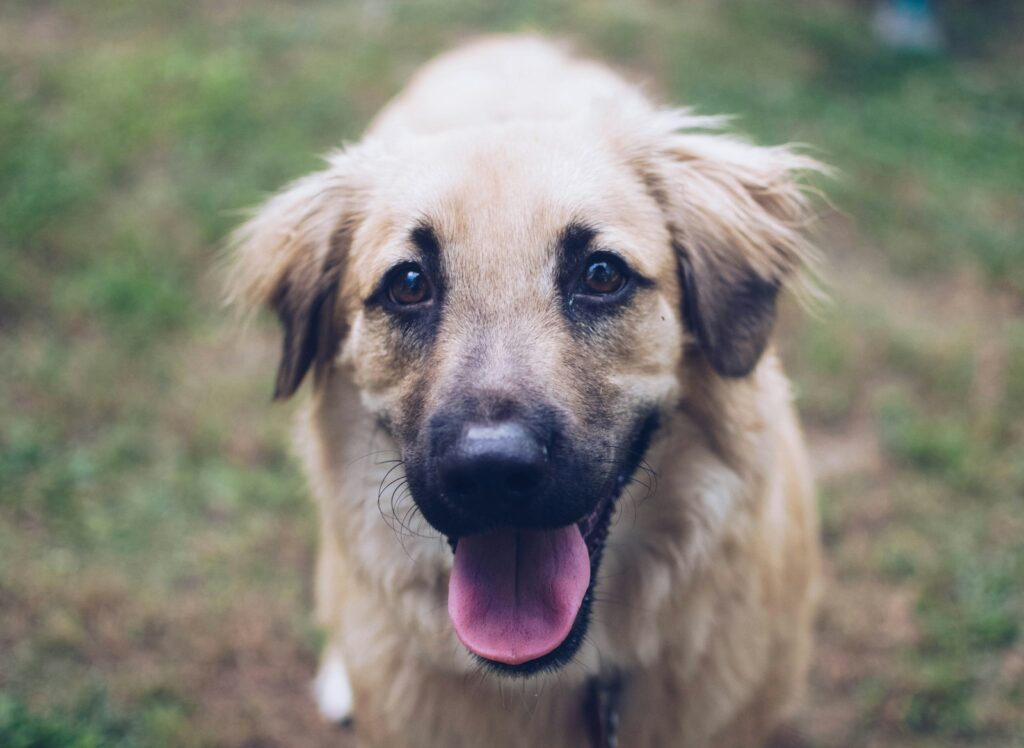
Photo by Dominique Shaw on Unsplash
Understanding Heat-Related Risks for Dogs
Dogs regulate their body temperature differently from humans. While we can sweat through our skin to cool down, dogs primarily rely on panting and releasing heat through their paw pads and nose. This limited cooling system makes them particularly vulnerable to overheating during hot weather.
Signs of Overheating in Dogs
Recognizing the early warning signs of heat stress can prevent a minor issue from becoming a life-threatening emergency. Watch for excessive panting that doesn’t subside after rest, drooling more than usual, or lethargy during normally enjoyable activities. Dogs experiencing heat stress may also show signs of confusion, stumbling, or reluctance to continue walking.
More severe symptoms include vomiting, diarrhea, bright red gums, or a rapid heartbeat. If your dog’s temperature rises above 104°F, they’re entering dangerous territory that requires immediate veterinary attention. Professional dog walkers carry thermometers and know how to check for these critical signs during summer walks.
Breeds at Higher Risk
Certain dogs face greater challenges in hot weather. Brachycephalic breeds like Bulldogs, Pugs, and Boston Terriers have shortened airways that make breathing more difficult in heat. Their flat faces and compressed nasal passages limit their ability to cool themselves effectively through panting.
Senior dogs and puppies also require extra attention during summer walks. Older dogs may have underlying health conditions that make temperature regulation more difficult, while young puppies haven’t fully developed their heat tolerance. Overweight dogs carry extra insulation that makes cooling more challenging, regardless of their age.
Dogs with thick, double coats like Golden Retrievers and German Shepherds may seem built for cold weather, but they can overheat quickly in summer. Never shave these breeds completely, as their coat actually provides insulation against heat when properly maintained through regular brushing.
Timing Your Summer Dog Walks
The timing of your walk can be the most important safety decision you make during summer months. Professional pet sitters and dog walking services typically adjust their schedules dramatically when temperatures rise, prioritizing early morning and late evening hours.
Early Morning Adventures
Morning walks between 6 AM and 8 AM offer the coolest temperatures and most comfortable conditions for your dog. The pavement hasn’t had time to absorb heat from the sun, making it safe if they lay on it. Many professional dog walkers start their routes before dawn during peak summer weeks, using the cooler air to provide longer, more satisfying exercise sessions.
Morning walks also align well with many dogs’ natural energy patterns. After a night of rest, most pups are ready for activity and mental stimulation. This timing allows you to tire them out before the day gets too hot, meaning they’ll be more content to rest indoors during peak heat hours.
Evening Cool-Down Sessions
Late evening walks, typically after 7 PM or 8 PM depending on your location, provide another excellent opportunity for safe summer exercise. However, be aware that pavement and concrete surfaces retain heat long after air temperatures drop. Test surface temperature with your hand or the back of your palm before letting your dog walk on it.
Evening walks offer unique benefits beyond just cooler temperatures. Many dogs enjoy the different scents and sounds present during twilight hours. The changing light can provide mental stimulation as your pup encounters familiar neighborhood routes with new sensory experiences.
Avoiding Midday Heat
The period between 10 AM and 4 PM typically presents the greatest risk for heat-related injuries during summer walks. Even when air temperatures seem manageable, pavement and asphalt can reach dangerous levels that will burn your dog’s paw pads within seconds.
If you must walk during these hours due to work schedules or other commitments, seek shaded routes through nature parks or wooded areas. Grass stays cooler than concrete, and tree cover can reduce ambient temperature by several degrees. Some professional dog walking services use booties to protect paws during necessary midday outings.
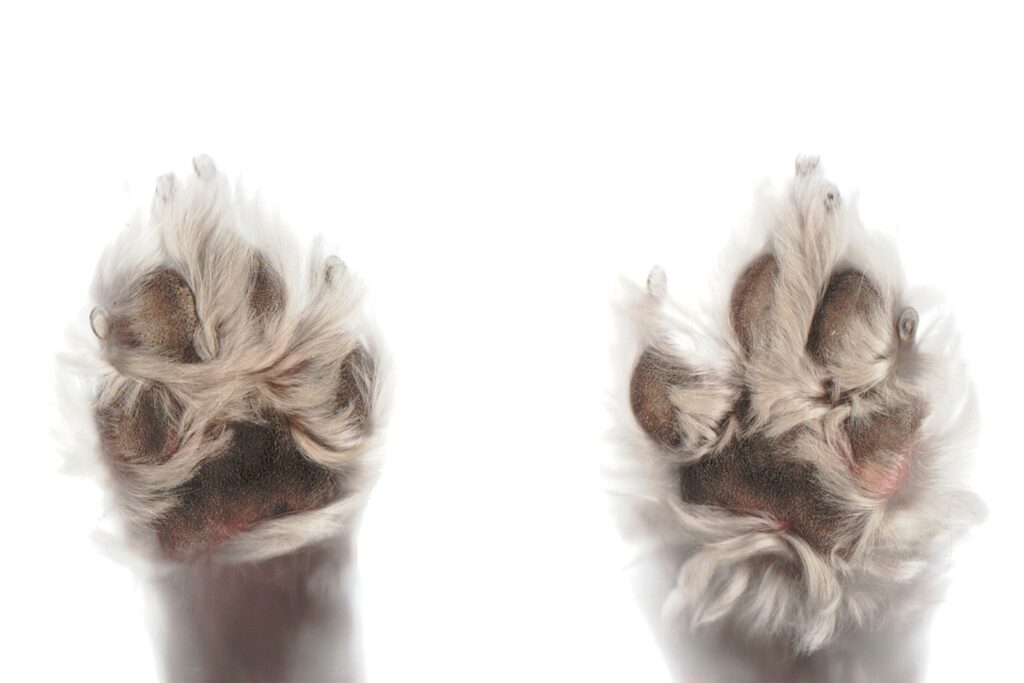
Photo by Natalie Parham on Unsplash
Protecting Your Dog’s Paws
Pavement temperatures can reach dangerous levels even when the air temperature feels comfortable. When air temperature hits 85°F, asphalt can reach 135°F – hot enough to cause serious burns in just a few seconds of contact.
The Hand Test
Before every summer walk, perform a simple hand test to check pavement temperature. Place the back of your hand flat against the walking surface for seven seconds. If you can’t comfortably keep your hand there for the full time, it’s too hot for your dog’s paws.
This test should become an automatic part of your pre-walk routine during warm months. Different surfaces heat up at different rates, so check multiple areas along your planned route. Concrete, asphalt, and metal surfaces pose the greatest burn risks.
Protective Gear Options
Dog booties provide excellent protection for paws during necessary summer walks. Look for breathable materials with good grip that won’t slide around on your dog’s feet. Many professional dog walkers keep several sizes on hand to accommodate different dogs in their care.
Start introducing booties gradually before you need them for safety. Let your dog wear them inside your house for short periods so they can adapt to the feeling. Some dogs accept booties immediately, while others need time and positive reinforcement to feel comfortable walking in them.
Paw Care and Maintenance
Regular paw care becomes even more important during summer months. Check your dog’s paw pads daily for signs of cracking, cuts, or burns. Keep the hair between their toes trimmed to prevent debris from collecting and causing irritation.
Apply a thin layer of paw balm or petroleum jelly to dry or cracked pads, but avoid over-moisturizing which can make paws more susceptible to injury. If you notice any wounds or persistent limping, consult your veterinarian promptly.
Hydration Strategies
Proper hydration forms the foundation of safe summer dog walking. Dogs need constant access to fresh, cool water before, during, and after exercise in warm weather. Professional pet care services always carry water and collapsible bowls on summer routes.
Pre-Walk Hydration
Ensure your dog has access to water before heading out, but don’t force them to drink large amounts right before exercise. This can cause uncomfortable sloshing and potentially contribute to bloat in susceptible breeds. Instead, maintain consistent hydration throughout the day.
Monitor your dog’s water intake patterns during hot weather. Some dogs naturally drink more when temperatures rise, while others may need encouragement. Adding a small amount of low-sodium chicken broth to their water can entice reluctant drinkers.
During-Walk Water Breaks
Plan water stops every 10-15 minutes during summer walks, especially for longer outings. Bring a portable, collapsible water bowl and enough fresh water for your dog’s size and the walk’s duration. Many dog walkers use insulated bottles to keep water cool during hot weather.
Watch for signs that your dog needs a water break even if it hasn’t been 15 minutes. Excessive panting, seeking shade, or lying down are all indicators that your pup needs hydration and cooling. Don’t wait for your dog to show distress before offering water.
Post-Walk Recovery
Continue offering water after returning from your walk, but monitor intake to prevent bloating. Some dogs will gulp large amounts of water when overheated, which can cause digestive issues. Offer small amounts frequently rather than unlimited access immediately after exercise.
Consider adding electrolyte supplements designed for dogs if your pet has been particularly active in the heat. These products can help replace minerals lost through excessive panting, but always consult your veterinarian before adding supplements to your dog’s routine.
Route Planning for Hot Weather
Summer dog walking requires different route considerations than cooler seasons. Successful hot-weather walks prioritize shade, shorter distances, and surfaces that won’t burn sensitive paw pads. Professional dog walking services often maintain separate summer and winter route maps to account for seasonal challenges.
Seeking Natural Shade
Plan routes that maximize time spent under tree cover or in naturally shaded areas. Parks, wooded trails, and tree-lined residential streets provide relief from direct sun exposure. Even partial shade can reduce the ambient temperature and make walks more comfortable for your dog.
Beach and lakefront areas might seem appealing for summer walks, but sand and boardwalks can become extremely hot. If you choose waterfront routes, stick to early morning hours and test sand temperature just as you would pavement.
Grass vs. Pavement Priorities
Whenever possible, route your summer walks to prioritize grass, dirt trails, or other natural surfaces over concrete and asphalt. Grass stays significantly cooler than artificial surfaces and provides a more comfortable walking experience for your dog’s paws.
Many neighborhoods have park areas or green spaces that connect to form longer walking routes. Research these options in advance so you’re not stuck on hot pavement when temperatures rise unexpectedly.
Building in Rest Stops
Identify shaded rest areas along your regular routes where you and your dog can take breaks. Benches under trees, covered pavilions, or even shaded doorways can provide crucial cooling opportunities during longer walks.
These rest stops become even more important when walking older dogs or breeds prone to overheating. Bring water and food/ treats. Plan shorter distances between breaks and be prepared to cut walks short if your dog shows signs of heat stress.
Age-Specific Summer Walking Tips
Different life stages require modified approaches to summer dog walking. Puppies, adult dogs, and seniors each face unique challenges when temperatures rise, and successful pet care adapts to these varying needs.
Puppy Considerations
Puppies under six months old have limited ability to regulate their body temperature and tire more quickly than adult dogs. Their small size means they’re closer to hot pavement, and their developing systems may not handle heat stress as effectively.
Keep puppy walks short during summer months, focusing on early socialization and basic training rather than extensive exercise. Many professional dog walkers limit puppy outings to 5-10 minutes during hot weather, prioritizing shade and frequent water breaks.
Watch puppies closely for signs of overheating, which can develop rapidly in young dogs. Heavy panting, excessive drooling, or reluctance to continue walking warrant immediate rest in a cool, shaded area.
Adult Dog Adaptations
Healthy adult dogs typically handle summer heat best among all age groups, but they still require careful monitoring during hot weather walks. Athletic or working breeds may want to maintain their usual activity levels despite rising temperatures, making owner judgment crucial for safety.
Gradually acclimate adult dogs to warmer walking conditions rather than suddenly exposing them to peak summer heat. Start with shorter distances and cooler times, slowly building tolerance as your dog adapts to the season.
Even fit adult dogs can develop heat exhaustion quickly when conditions change. A dog that handled 80°F weather easily may struggle when temperatures jump to 90°F, especially with added humidity.
Senior Dog Modifications
Senior dogs often have the most difficulty with hot weather walking due to underlying health conditions, reduced mobility, or medication effects. Arthritis can worsen in heat, while heart conditions may make temperature regulation more challenging.
Consider very short, frequent outings for senior dogs during summer rather than longer walks. Many older dogs benefit from multiple 5-10 minute trips throughout the day rather than single longer sessions that might exhaust them.
Pay extra attention to recovery time for senior dogs after summer walks. If your older dog seems unusually tired or doesn’t return to normal behavior within 30 minutes of coming inside, consult your veterinarian about adjusting their summer exercise routine.
Emergency Preparedness and First Aid
Despite careful planning, heat-related emergencies can still occur during summer dog walks. A person knowing how to respond quickly can save your dog’s life and prevent minor heat stress from becoming a serious medical emergency.
Recognizing Heat Stroke
Heat stroke represents a life-threatening emergency that requires immediate action. Unlike heat exhaustion, which develops gradually, heat stroke can occur rapidly and cause permanent organ damage or death without prompt treatment.
Signs of heat stroke include body temperature above 104°F, bright red gums and tongue, rapid heartbeat, and difficulty breathing. Dogs may act disoriented, vomit, or collapse entirely. If you suspect heat stroke, begin cooling measures immediately while heading to the nearest veterinary facility.
Immediate Cooling Techniques
If your dog shows signs of severe overheating, move them to shade or air conditioning immediately. Apply cool (not cold) water to their paw pads, belly, and inside of their legs where blood vessels are close to the skin. Avoid using ice water, which can cause blood vessels to constrict and actually slow cooling.
Place wet towels over your dog’s body, replacing them frequently as they warm up. Direct a fan toward your pet if available, but don’t delay seeking veterinary care to provide cooling measures. Call ahead to your vet or emergency clinic so they can prepare for your arrival.
When to Talk To A Vet (Kate’s K9 Pet Care Is Not A Vet!)
DISCLAIMER: Kate’s K9 Pet Care does NOT provide medical services or give medical advice. For health-related issues, contact your vet immediately.
Contact your veterinarian immediately if your dog’s temperature exceeds 104°F, if cooling measures don’t reduce their temperature within 10-15 minutes, or if your dog loses consciousness or has difficulty breathing.
Even if your dog seems to recover from heat stress, schedule a veterinary examination within 24 hours. Heat exhaustion can cause internal damage that may not be immediately apparent, and professional evaluation ensures your pet hasn’t suffered complications.
Why Choose Kate’s K9 Pet Care?
At Kate’s K9 Pet Care, we pride ourselves on being trained and certified professionals dedicated to keeping your pet safe and happy. Our team has undergone comprehensive training in pet care, ensuring we have the expertise to handle various situations, from understanding canine behavior to recognizing potential signs its time to go inside during walks. We are well-versed in essential safety practices, including hot weather precautions, proper hydration, and paw protection, so other people’s dogs can enjoy a safe, enjoyable walk even on the warmest days.

Frequently Asked Questions
What temperature is too hot for dog walking?
Most veterinarians recommend avoiding walks when air temperature exceeds 85°F, especially for at-risk breeds. However, pavement temperature matters more than air temperature. If you can’t hold your hand on the walking surface for seven seconds, it’s too hot for your dog’s paws.
How long should summer dog walks be?
Summer walks should generally be shorter than cooler-weather outings. Most dogs do well with 15-30 minute walks during early morning or late evening hours. Adjust based on your dog’s breed, age, and fitness level, and always prioritize frequent water breaks over distance.
Can I use ice water to cool my overheated dog?
No, ice water can actually be dangerous for overheated dogs. The extreme cold can cause blood vessels to constrict, slowing the cooling process. Use cool (not cold) water and apply it to your dog’s paw pads, belly, and inside legs where cooling is most effective.
Should I shave my long-haired dog for summer?
Generally, no. Double-coated breeds like Golden Retrievers and German Shepherds rely on their coat for insulation against both cold and heat. Instead of shaving, maintain their coat through regular brushing to remove excess undercoat and prevent matting.
Products for Summer Walks with Your Dog
Here are our recommended summer essentials to keep your furry friend comfortable and safe during warm weather walks:
Ruffwear Swamp Cooler Cooling Vest
Help your dog stay cool on hot days with this innovative cooling vest. It uses evaporative cooling technology to regulate your dog’s temperature.
Protect your dog’s paws from hot pavement with these durable, reusable booties. They come in a variety of sizes for a snug, secure fit.
Keep your dog hydrated with this lightweight, collapsible bowl, perfect for water breaks during walks or hikes.
This comfortable, no-pull harness helps reduce strain on your dog, making long summer walks more enjoyable for both of you.
Ideal for post-walk relaxation, this gel cooling mat provides a refreshing spot for your dog to cool down after being outdoors.
Doggie Design UV Protective Mesh Dog Shirt
Shield your dog from harmful UV rays with this breathable, lightweight shirt that offers sun protection during your outings.
Outward Hound DayPak Dog Backpack
Perfect for longer summer adventures, this lightweight backpack lets your dog carry water, snacks, and other essentials.
Equipping yourself and your dog with the right products ensures that summer walks are safe, enjoyable, and stress-free! Always remember to monitor your pet for signs of overheating and provide plenty of water breaks.
What are the best times for summer dog walking?
Early morning hours between 6 AM and 8 AM typically offer the coolest temperatures and safest pavement conditions. Late evening walks after 7 PM or 8 PM can also work well, but always test surface temperature first as pavement retains heat long after air temperature drops.
Creating Safe Summer Memories
Summer dog walking doesn’t have to be stressful or dangerous when you understand the risks and take appropriate precautions. By adjusting your timing, planning shaded routes, and staying alert to your dog’s needs, you can maintain an active lifestyle throughout the warmer months while keeping your furry friend safe and comfortable.
Professional dog walkers and pet sitters have developed these strategies through experience with hundreds of dogs across different breeds, ages, and fitness levels. Their success comes from prioritizing safety over convenience and remaining flexible when weather conditions change.
Remember that every dog is unique, and what works for one pup may not suit another. Pay attention to your dog’s individual responses to heat and adjust your approach accordingly. Some dogs thrive with early morning adventures, while others prefer evening explorations when the neighborhood comes alive with different sights and sounds.
The key to successful summer dog walking lies in preparation, observation, and a willingness to modify your routine when necessary. Your dog depends on your judgment to keep them safe, and the extra effort you put into summer safety planning pays off in years of healthy, happy adventures together.
If managing summer dog walking schedules proves challenging due to work commitments or other responsibilities, consider partnering with professional pet care services that specialize in hot-weather safety protocols. Experienced dog walkers understand the unique demands of summer pet care and can provide the exercise and attention your dog needs while you’re away, ensuring they stay healthy and engaged throughout the warmest months of the year.

